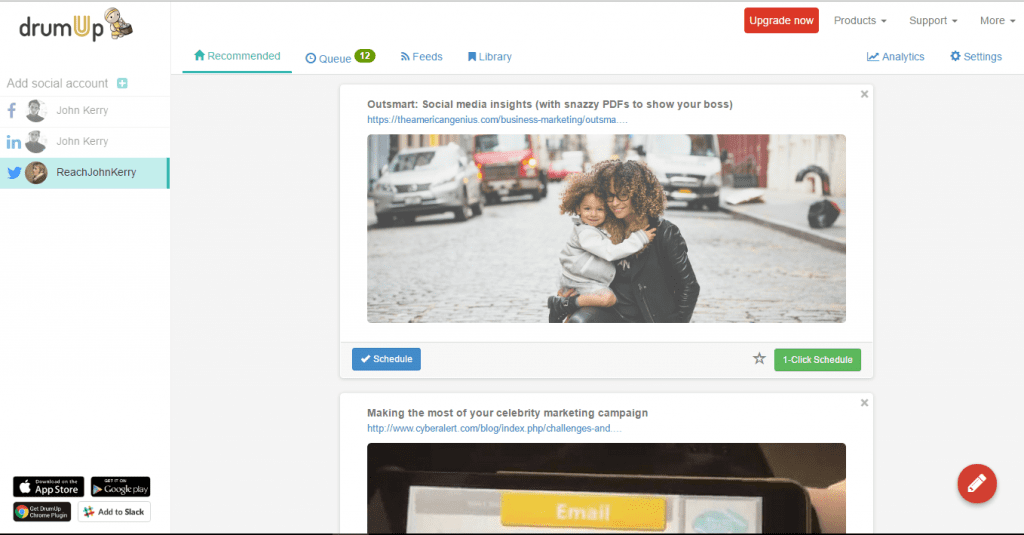Marketing automation helps small businesses compete with large organizations by helping them accomplish more with less manpower and time. Automation need not necessarily be expensive, contrary to popular beliefs. Most of this software offer affordable monthly subscriptions.
Lead conversion is a daunting task and metric for marketers. Driving traffic to a website is a task in itself, and only 1-2% of that traffic actually ends up converting, and sometimes it’s even less. Conversion requires optimized web pages and content, and constant engagement of website visitors/consumers so they aren’t interrupted by a competing business. Automation can help you do just that.
Here are five marketing automation tools to increase lead conversions.
1. Zoho

Managing online campaigns, collecting data and leads from them and finally sharing leads with your sales personnel is a long process. In the time that loss between those steps, your leads may have run cold, or worse, been captured by competition.
A good integrated CRM, like Zoho, can help you document, manage and nurture leads better.
On the tool, you can scan business cards collected at events and instantly upload them into automated email nurturing campaigns. Your website visits and form fillers are automatically indexed on the tool’s CRM and you can custom create the lead nurturing email chains to get those leads to convert.
2. DrumUp

People spend 30-40 minutes a day on social media, making it a great platform to capture leads (Source: SocialMediaToday). But making an impact on social is tough, given that your competition is not only other brands but posts created by friends and family.
A good social automation tool like DrumUp can help manage multiple social accounts, and reach and convert more of your target audience.
Using the tool you can schedule posts weeks in advance on Facebook, Twitter and LinkedIn accounts, and set posts on a repeat schedule. You can also curate content related to your industry, catch influencer attention with #tags and @mentions, and reach a wider audience on social.
3. GetResponse

Reorders from existing clients form an important part of every company’s revenue. The more your reorder rate is, the better your financial success is because it costs more to acquire a new customer than retain an old one.
A good email marketing tool like GetResponse can help you keep your consumers engaged.
Designing email marketing templates isn’t easy, especially if it isn’t in your skillset, but this tool eliminates the need for design with its industry-based template library. Post email creation, you can run A/B tests with the email and landing pages on the tool, and set autoresponder emails to keep your leads engaged.
4. InfusionSoft

The actual billing/payment step is critical in the lead conversion cycle. If your leads face issues during payment, there are high chances of losing those conversions.
A good sales automation tool like InfusionSoft can help you ensure performance without hitches in the final stages of conversion.
On the tool, you can create and automate contact management, follow-ups, and billing and payment communication. You can also capture new leads and have them run through your created shopping experience.
5. Socedo

Social networks are also busy with people who are ready to buy from you right now, but finding those people can be tricky, given that most social platforms (apart from LinkedIn) don’t exactly support lead prospecting.
A good prospecting tool like Socedo can assist you with social lead generation.
Using the tool, you can identify prospect leads based on their ‘social intent data’, which is essential an understanding of their intent derived from their actions and behavior on social networks. You can also contact these prospects via Direct Messages on Twitter.
When the world seems to be moving towards humanized marketing, it is understandable that some brands are apprehensive of relying on automation. What those brands overlook is the prevailing competition that exists in today’s market and how surviving without automation can not only be hard but limiting.
Another key difference is that between solely relying on automation and using it as a tool to enable one-on-one communication. Some outreach cannot be manually managed and needs to be automated.
This isn’t channel-specific. Brands are automating email newsletters, social media posting and purchase related communication to ensure efficiency and a hundred percent response rate.
Without automation you risk missing emails, responding too late or messing with brand consistency.
So, automation is a necessity, but the messages that you create and set on automatic mode are under your control, and so are the responses that you can write to people who personally interact with your brand.
Another advantage of automation is that it lessens the manual burden, leaving you enough time to deal with more important issues – like guiding your team, creating strategy, and one-on-one interactions with customers.
Regardless, automation is key in lead conversion, because it ensures a near hundred percent outreach rate and improved results.
 About the Author
About the Author
Disha Dinesh is a Content Writer at Godot Media, a leading content agency. Her interests include social media and content marketing. When she’s not writing, she’s on the hunt for social media trends and inspiration.

